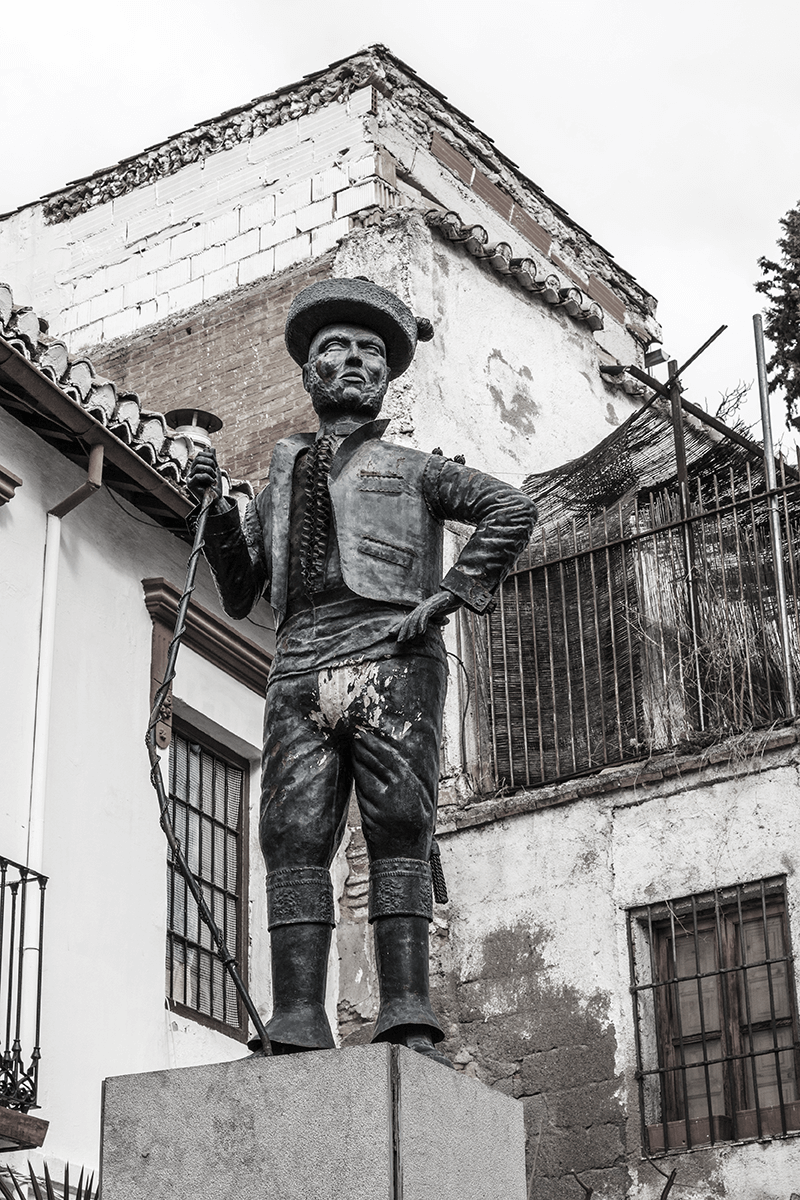History of Flamenco in Granada

To understand the roots of Flamenco Shows in Granada we have to take a look back in time to the very core of Grenadian Flamenco. The Sacromonte.
The name of Sacromonte, wich translation is sacred mountain, has an uncertain origin, some historians consider it named by the Christians in the 14th century, due to the presence of an Islamic Graveyard there.
The main characteristic of this environment is his troglodyte settlement. Their inhabitants have been digging their homes in the mountain for centuries, generating a traditional Grenadian house known as caves. On the outside they resemble to any other house, beside the fact that ther facade is substained on the rock. The inside is caved and has a very particular shape that make them unique in the world.
The Sacromonte was one the known cradles of Flamenco in Spain. After the conquest of Grenada in 1492 Moorish people were pushed out of the city walls and settled on the Sacromonte, there they met with the Gypsies. Since that moment both cultures coexisted and merged in several ways. There was a big affinity between them due to both being considered outcast by the society. In 1499 a law signed by the Catholic Kings forced the Gypsies to abandon their nomad way of life, reason why, after the ban of the Moorish, Sacromonte became a permanent quarter for them in Grenada.
The origin of the Zambra, the traditional Grenadian Flamenco, cannot be understood without the previous lines. Its name, Zambra, comes from the Arabic zumrã, “party”. It was the wedding ritual and party that Grenadian Moorish used to celebrate. It became prohibited by the inquisition in 16th century but it remained being celebrated in secret. This tradition was absorbed, learned, and transformed by the Sacromonte´s Gypsies, whom embraced the Zambra as their own tradition. Gypsies themselves are the only remains of the whole Moorish musical tradition, the only ones that hold heritage of those Moorish evolved and turned it into Flamenco as we know it nowadays.
It was on the 18th and 19th centuries, when romantic writers arrived to Grenada, when the Zambra and the Flamenco bursted as an art expression appreciated worldwide. Was precisely this appreciation what made flamenco a formal discipline and a musical style, getting it out of the gypsies celebrations.
Was in this moment, when romantic writers arrived to Granada, when Flamenco Caves of the Sacromonte became famous. Travelers went to Sacromonte to meet the raw and pure Spanish Gypsy culture and that´s the reason why romantic travellers pictured Andalusian people permanently dressed in flamenco suits. Why? Because Gypsies were standing outside the caves always ready to perform their flamenco show for the Travellers. The first Gipsy family arriving to the visitors was the one that performed and the one that could charge for it. That´s the reason they were always dressed in flamenco suits and the reason why that cliche still remains.
Zambra is nowadays an artform genuine and unique from Grenada, Sacromonte and his Gypsies, it transcends the strict professional flamenco show that Casa del Arte Flamenco offers and it represents in many ways the very history of Grenada and its cultural heritage.
There are several figures that helped the Zambra become what it is nowaday, as the Chorrojumo, Manolo Caracol or María la Canastera, but we will talk about them in further posts.
-
Recent Posts
Recent Comments
Archives
- April 2025
- March 2025
- February 2025
- December 2024
- November 2024
- October 2024
- August 2024
- July 2024
- June 2024
- May 2024
- April 2024
- March 2024
- February 2024
- January 2024
- December 2023
- November 2023
- October 2023
- September 2023
- August 2023
- July 2023
- June 2023
- April 2023
- March 2023
- January 2023
- December 2022
- November 2022
- October 2022
- November 2021
- October 2021
- February 2020
- January 2020
- December 2019
- November 2019
- October 2019
- September 2019
- August 2019
- July 2019
- June 2019
- May 2019
- April 2019
- March 2019
- February 2019
- January 2019
- December 2018
- November 2018
- October 2018
- September 2018
- August 2018
- July 2018
- June 2018
- May 2018
- April 2018
- March 2018
- February 2018
- January 2018
- December 2017
- November 2017
- October 2017
- September 2017
- August 2017
- July 2017
- June 2017
- May 2017
- March 2017
- February 2017
- January 2017
- December 2016
- November 2016
- October 2016
- September 2016
Categories
Meta
